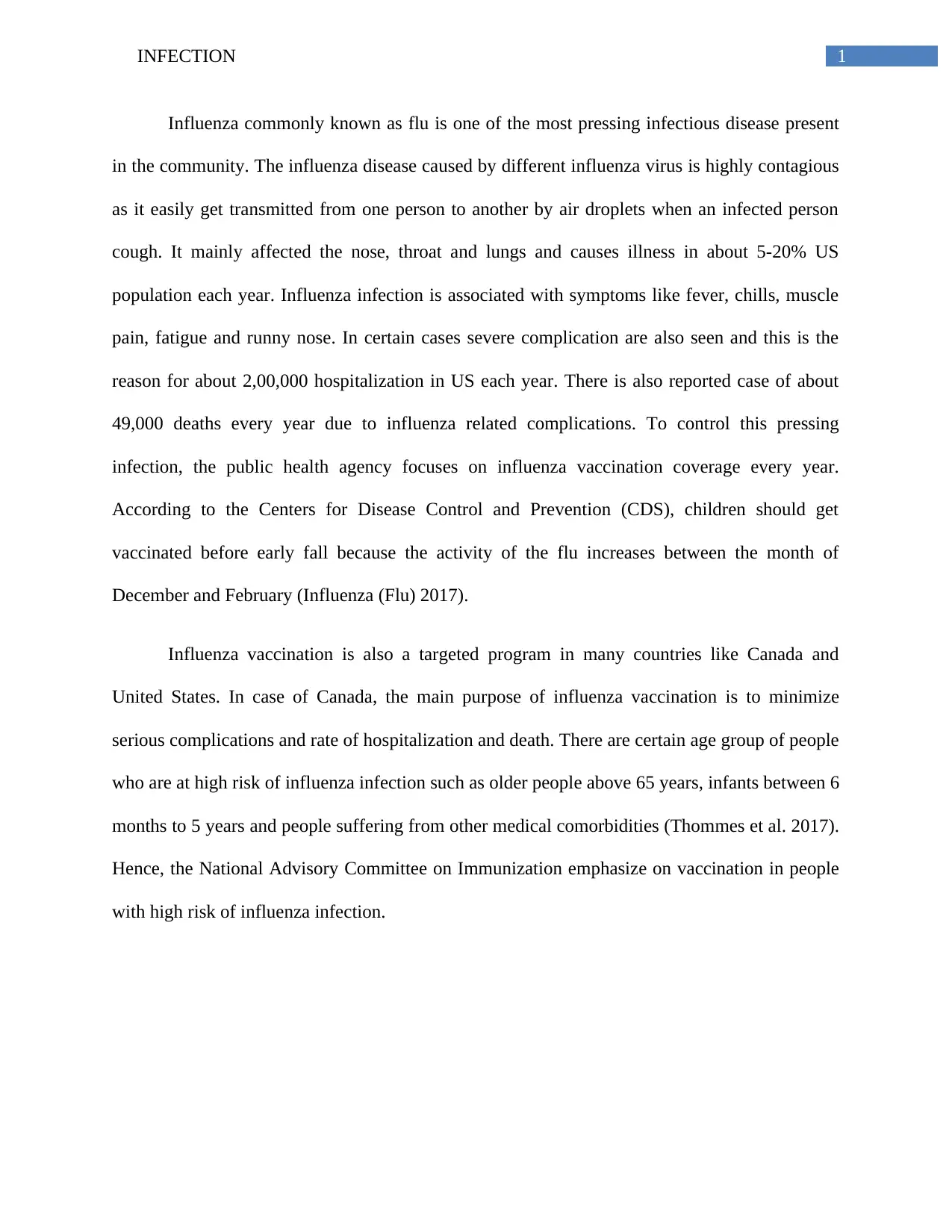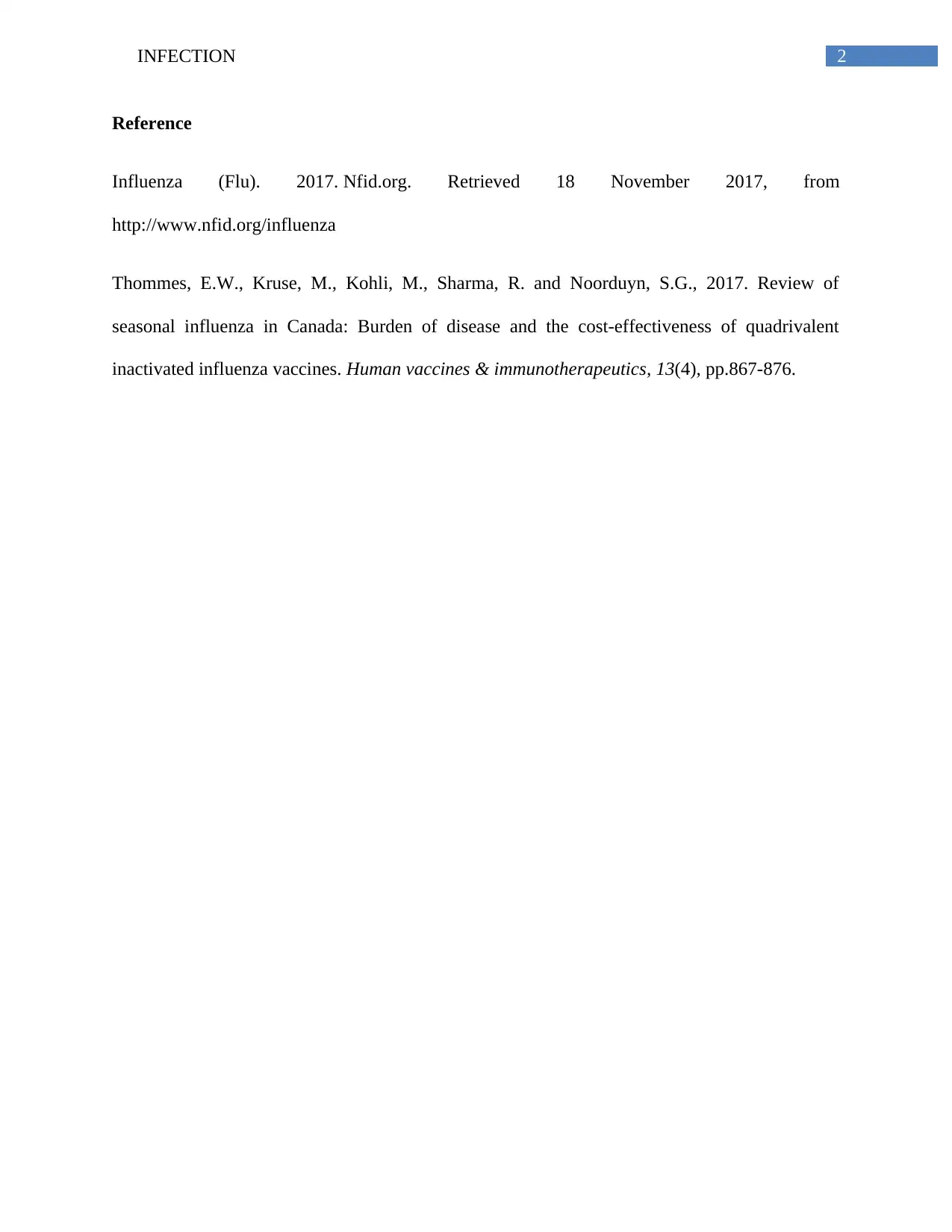Influenza Infection: Public Health Report, Analysis, and Treatment
VerifiedAdded on 2020/04/15
|3
|383
|70
Report
AI Summary
This report provides an overview of influenza infection, a significant public health concern. It discusses the contagious nature of the virus, its common symptoms like fever, chills, and fatigue, and the potential for severe complications leading to hospitalization and mortality. The report highlights the importance of vaccination as a primary prevention strategy, referencing guidelines from the Centers for Disease Control and Prevention (CDC) and the National Advisory Committee on Immunization. It also mentions the specific focus on vaccination programs in countries like Canada, emphasizing the goal of reducing serious complications and death rates. The report emphasizes that certain age groups, such as the elderly and young children, are at higher risk and therefore targeted for vaccination. The report is based on research and data from reliable sources, including the National Foundation for Infectious Diseases (NFID) and scientific publications.
1 out of 3










![[object Object]](/_next/static/media/star-bottom.7253800d.svg)